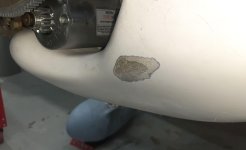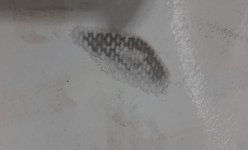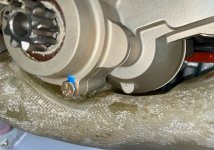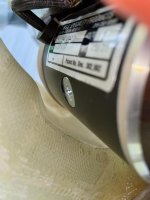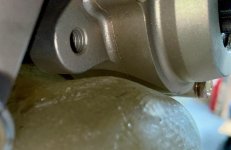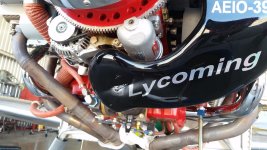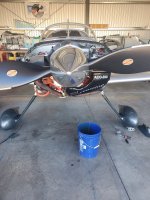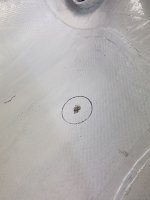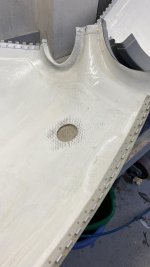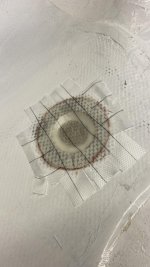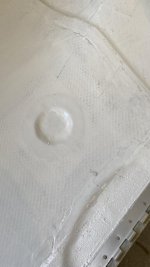Lkitson
Well Known Member
I have an issue with contact between my lower cowl and the intake snorkel on my -8 that’s causing wear on both parts. The photo on the left below is the snorkel and the photo on the right is the cowl. I first noticed signs of it after the aircraft’s first flight last year but it appears to be getting worse and it’s time to do something about it.
I’ve seen two other -8’s with the same issue and both of them had some kind of anti-chafe tape/pad on the surfaces to stop the fretting. I’d like to do something more permanent than that so I’m thinking about reworking either the cowl or the snorkel to provide more clearance.
My options:
1) Cut out the wear area on the snorkel and layup a repair to create a new surface that’s more concave than the current surface. I did this during my build to provide clearance for the mixture lever and alternator. My concern with this option is that it could potentially affect the airflow through the snorkel.
2) Grind down the wear area on the cowl, including the inner skin and some of the core. This seems like a better option to me as long as I don’t remove too much of the core.
3) Just put some anti-chaff tape over the contract areas of both parts and don’t modify either the snorkel or the cowl. If I go with option 1 or 2 I’ll probably still put some anti chaff tape on one of the parts in case they still make contact.
Looking for opinions on the best option especially from anyone who has dealt with this issue before.
I’ve seen two other -8’s with the same issue and both of them had some kind of anti-chafe tape/pad on the surfaces to stop the fretting. I’d like to do something more permanent than that so I’m thinking about reworking either the cowl or the snorkel to provide more clearance.
My options:
1) Cut out the wear area on the snorkel and layup a repair to create a new surface that’s more concave than the current surface. I did this during my build to provide clearance for the mixture lever and alternator. My concern with this option is that it could potentially affect the airflow through the snorkel.
2) Grind down the wear area on the cowl, including the inner skin and some of the core. This seems like a better option to me as long as I don’t remove too much of the core.
3) Just put some anti-chaff tape over the contract areas of both parts and don’t modify either the snorkel or the cowl. If I go with option 1 or 2 I’ll probably still put some anti chaff tape on one of the parts in case they still make contact.
Looking for opinions on the best option especially from anyone who has dealt with this issue before.
Attachments
Last edited:



